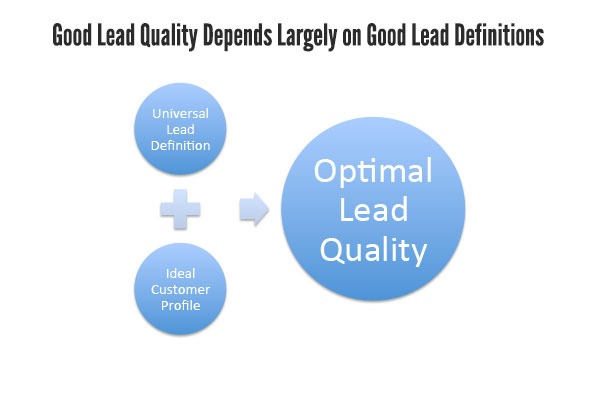For many in sales management, how to get better quality leads is a pressing question.
We’ve been looking at how to improve lead quality by aligning Sales and Marketing teams (in these two previous articles. As a manager, you may feel like you have to referee the blame game: Marketing says Sales doesn’t follow up on good leads; Sales says too many leads are not qualified.
Knowing how to get better quality leads comes down to a system of collaboration. We’ve outlined 7 management tools to help everyone understand your company’s target customer, to work together to optimize lead quality.
These are the last 3 of 7 tools to help you align the efforts of Sales and Marketing to get better quality leads:
5) Why is a Universal Lead Definition so hard to develop and follow?
One of the most important ways to unify sales and marketing is for both sides to collaborate, create and agree upon a universal lead definition and ideal customer profile. Lead quality largely depends on creating a good universal lead definition and ideal customer profiles. However, these definitions are often hard for companies to create and implement.
A lead definition is a scale and rating system to identify the least qualified to most qualified leads. An ideal client profile is a set of attributes that describes the characteristics, needs and wants that best describe your ideal buyer.
In addition to developing the lead definition and ideal customer profile, it is important to understand and define your target market. Who is the ideal contact? How do they buy?
Once you have your definitions in hand, the next stage is to implement them in your sales and marketing operations.
It is important that your focus on your target market., focus on key qualification criteria to ensure higher lead quality from an increase in quantity. Create an ideal customer profile and lead definitions and ensure all content and lists focus on penetrating your target market.
6) Verify that compensation is designed to reward performance that meets desired goals.
The first step in providing a compensation plan is to fairly compensate sales development representative in a way that motivates them to produce the results desired. Just as sales or business development receive a salary and commission to motivate them to close deals, so can compensation plans motivate employees in other parts of the company for their role in producing the desired results.
It is important that sales development representatives are compensated to motivate them to achieve desired goals.
7) Define operations and reporting processes and ask: Are they helping or hurting?
Sales and marketing processes should support closed loop reporting. You need to be able to see the results of leads that entered the sales process. This indicates which activities are most worthwhile, and what you need to adjust.
The purpose of this three-post series is to give management new tools to solving the lead quality conflict, so everyone benefits.
All together, these seven solutions help quiet the debate, and ignite collaboration:
- Assign Who Is Responsible for Resolution.
- Make Realistic Expectations.
- Have a Clear Reporting Structure
- Plan to Succeed.
- Use Universal Lead Definitions.
- Compensate to Motivate.
- Balance Your Processes.
Even if sales and marketing are traditionally at odds with each other, management can improve the productive synergy between them for better bottom line results.

